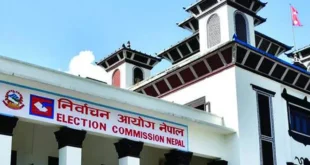Jubilee News Desk
Five years ago, under Union Minister Ravi Shankar Prasad, BSNL’s growth in income and ability to contain expenditure in salary, administrative, employee remuneration and other benefits, helped in growing EBITDA to Rs 3,855 crore in 2015-16 from Rs 672 crore in 2014-15 and now after few troubled years and a revival package BSNL is once again back on the track of profitability.

Government of India committed to revive BSNL for public service and fairness and granted package to support the PSU, called for a lot of discussions and debates in both houses of the Parliament. “We are going to revive BSNL and make it profitable,”Telecom Minister Ravi Shankar Prasad told the Lower House during the Question Hour in November 2019.
Now within a years of revival plan, the State-owned undertakings Bharat Sanchar Nigam Ltd. (BSNL) and Mahanagar Telephone Nigam Ltd. (MTNL) have turned EBITDA positive in first 6 months of this financial year. While for BSNL, EBITDA rose from minus Rs. 3596 crores for half year ended in September, 2019 to positive Rs. 602 crores, for MTNL the corresponding figures were minus Rs. 549 crores in September, 2019, and the current figure, positive Rs. 276 crores. According to Department of Telecommunications (DoT) sources,both organizations are expected to reduce their losses by 50% when compared to 2019-20.
The reasons for better performance include a sharp reduction in wage bill due to Voluntary Retirement Scheme (VRS) (nearly 50% workforce of BSNL and 75% of MTNL was reduced). Equally important, BSNL was able to maintain their revenue and cut down on other costs. BSNL is also rapidly expanding its Fiber-To-The Home (FTTH) connections and the progress is being closely monitored by DoT. In the mobile segment, market share has increased to 10.36% in October, 2020 as per figures published by TRAI. BSNL added over 10 million new customers during this financial year in mobile segment. This has also given fillip to Government’s Digital India drive of cashless transactions as online transactions has increased by over 43% in December, 2020 since last financial year.
It will be recalled that the Union Cabinet had approved the revival package for BSNL/ MTNL in October, 2019 which, inter-alia, included VRS, support for 4G spectrum, monetization of core and non-core assets, Sovereign Guarantee for Bonds to be raised by the PSUs and merger of MTNL and BSNL in the short run.
BSNL and MTNL have very successfully raised money from the bond route. In the recent bond-offer of MTNL, the issue was subscribed more than 3 times and for BSNL more than 2 times. According to DoT sources MTNL/ BSNL have been able to monetize core and non-core assets totalling Rs.1830 crores in 2019-20. This figure is expected to be in excess of Rs. 3000 crores in the current year. In this regard, 6 properties are expected to be approved for auction through DIPAM route.
BSNL is monetising its tower assets by leasing out its towers. It earned Rs. 1018 Cr. in the previous year and has planned to securitize the earnings from tower rentals. BSNL towers have unique preposition of fiber connection in more than 70% which make them highly attractive for TSP. Fiber has been monetised by leasing it out to private TSPs and BBNL. It has leased out 2 lac kilometres of OFC at the rate of Rs. 18000 per Km. per year earning a revenue of Rs. 360 Cr
Insofar as 4G services are concerned, as per DoT the position is quite clear that core network for 4G will be totally made in India. According to DoT sources, BSNL and MTNL are strategic assets, and will provide a big impetus to the Indian manufacturers in the field of telecom.
It will be recalled that the Indian mobile communication market now has only 4 players of which 3 are in the private sector and the fourth is the BSNL/MTNL combine. In the wireline or land line segment, BSNL/MTNL still has about 50% of the share with considerable network across the country. The PSUs are hopeful of leveraging this strength by offering the services on fiber and linking this with FTTH connections.
 Jubilee Post News & Views
Jubilee Post News & Views





